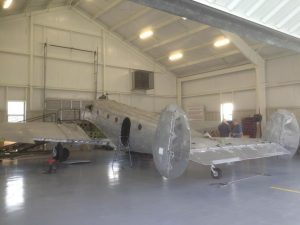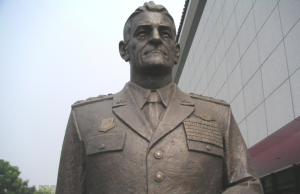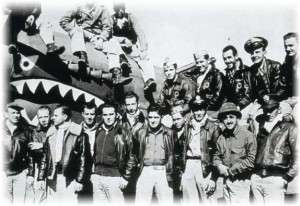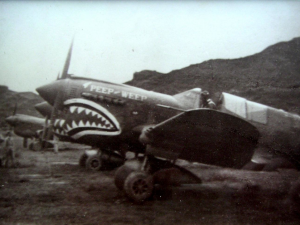
 Named after a local man of note, General Claire Lee Chennault, the Chennault Aviation and Military Museum located in Monroe, Louisiana is located not far from where the legendary aviator grew up and is the town where he chose to live after the Second World War had ended. Monroe was also the site of site of the Selman Field Army-Air Force Navigation School which opened in 1942 and was the largest military navigation facility in the country during WWII. The school graduated over 15,000 navigators, over 1,500 of whom lost their lives in combat.
Named after a local man of note, General Claire Lee Chennault, the Chennault Aviation and Military Museum located in Monroe, Louisiana is located not far from where the legendary aviator grew up and is the town where he chose to live after the Second World War had ended. Monroe was also the site of site of the Selman Field Army-Air Force Navigation School which opened in 1942 and was the largest military navigation facility in the country during WWII. The school graduated over 15,000 navigators, over 1,500 of whom lost their lives in combat.
To preserve and promote the area’s rich military and aviation legacy, In 1986, those who had trained at Selman Field and their descendants held the first Selman Field Reunion, and later reached an agreement with with the City of Monroe to establish a repository of artifacts and memorabilia of the airfield and the area’s military history. The museum itself opened its doors in 2000, housed within one of the last surviving buildings used by the Selman Field School and includes historic aircraft, including a Beechcraft Model 18 presently under restoration.

(Image Credit: Chennault Aviation and Military Museum)

(Image Credit: Chennault Aviation and Military Museum)

 The Tigers’ shark-faced fighters are among the most recognizable combat aircraft of World War II and under Chennault’s leadership they developed innovative tactics for combatting the Japanese air assaults on China, flying their first mission just 12 days after the Japanese attack on Pearl Harbor and providing reportable American victories at a time when the news was dominated by stories of American defeat at the hands of Japanese forces. The AVG was later disbanded/folded back into the U.S. Air Force in 1942, with Chennault taking control of the China Air Task Force of fighters and bombers as part of the Tenth Air Force. Its mission was to defend the aerial supply operation over the Himalayan mountains between India and China, nicknamed “The Hump” and to provide air support for Chinese ground forces who were fighting the Japanese invasion of their homeland.
The Tigers’ shark-faced fighters are among the most recognizable combat aircraft of World War II and under Chennault’s leadership they developed innovative tactics for combatting the Japanese air assaults on China, flying their first mission just 12 days after the Japanese attack on Pearl Harbor and providing reportable American victories at a time when the news was dominated by stories of American defeat at the hands of Japanese forces. The AVG was later disbanded/folded back into the U.S. Air Force in 1942, with Chennault taking control of the China Air Task Force of fighters and bombers as part of the Tenth Air Force. Its mission was to defend the aerial supply operation over the Himalayan mountains between India and China, nicknamed “The Hump” and to provide air support for Chinese ground forces who were fighting the Japanese invasion of their homeland.
While the small museum has gained a temporary reprieve by the evaporation of the anticipated bill from the state, the larger message clearly indicates that self-sufficiency is the key to its survival, lest they be forever held hostage by the state’s budget and the machinations of its political process. Perhaps the biggest shot in the arm could come from the release of a planned 10-hour miniseries on the Flying Tigers scheduled to begin filming at the end of this year, which could greatly increase interest in Chenault and his band of heroic “mercenaries.”


Be the first to comment
Graphic Design, Branding and Aviation Art